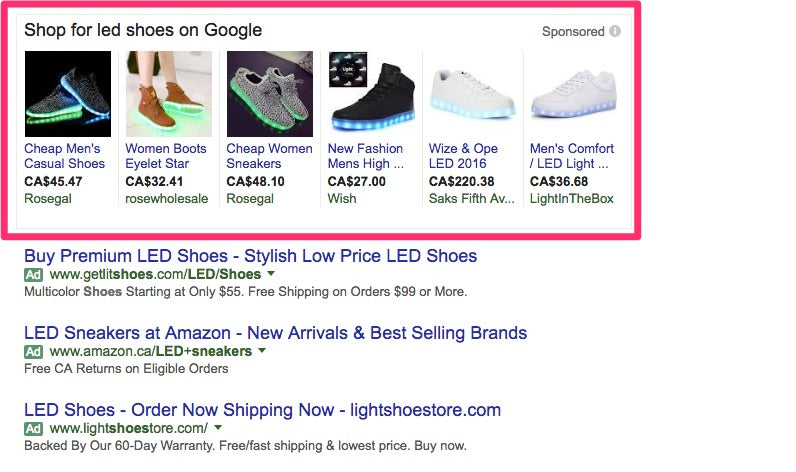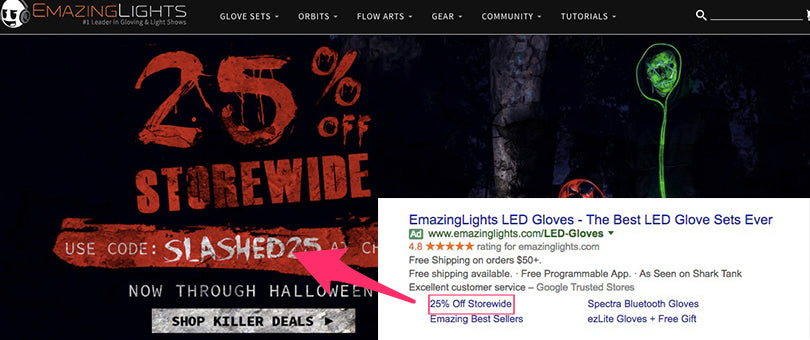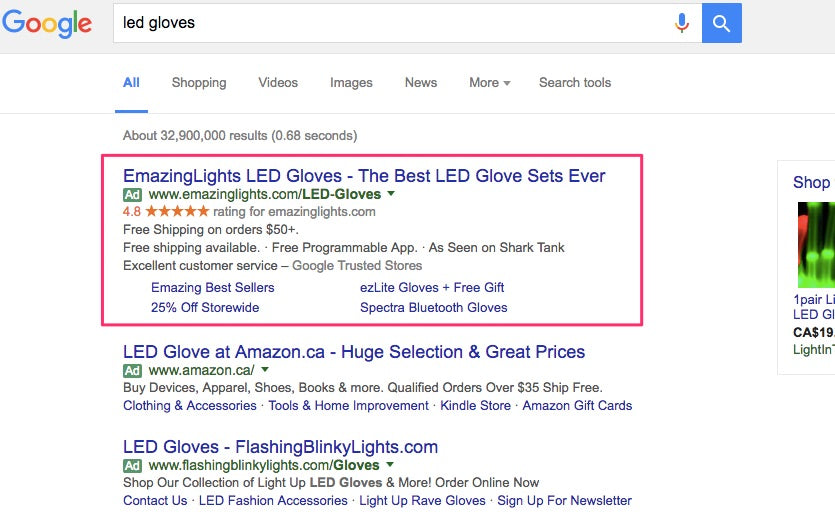6 Common Google Ads Mistakes You Should Stop Paying For
Google Ads can be a great way to target potential customers who are actively looking for what you're selling through the most popular search engine in the world.
However, for all the power and potential of search engine marketing, it can also be one of the harder and more technical channels to tackle. And that has the potential to make it expensive if you’re not using it correctly.
The saying that you need to "spend money to make money" is perhaps most relevant for pay-per-click marketing, but that doesn’t mean you can’t optimize to get the most bang for your buck.
The following are some of the most common Google Ads mistakes you should remedy to get a better return on your Ads investment.
If you want to learn how to get started with Ads, check out How to Spend Your First $100 on Google Ads.
1. Not Using Google Shopping Ads For Physical Products
While text ads are great for marketing services and other intangible offers, Google Shopping Ads are often a better fit for physical products, grabbing more attention than text ads by showing product images, displaying prices and using a more purchase-oriented presentation.

They also get prime real estate on both desktop and mobile in search engine results, not only appearing above where you’ll find most text ads, but also within the Shopping tab of Google search.
If you run an ecommerce store selling physical products, it’s worth experimenting with Google Shopping Ads.
Free Ebook: Google Shopping for Small Businesses
Google Shopping ads are one of the leading traffic sources that can give you the ultimate edge. Discover this hidden gem often overlooked by your competition with our guide.
Install Shopify's free Google Shopping app to sync your products with Google's Merchant Center, and see if you're eligible for a $100 Google Ads credit.
Get the free ebook now2. Not Using The Correct Keyword Match Types
There are several ways you can approach keyword match types. Keyword match types are essentially ways for you to organize your bid on different search terms—those are really what you’re bidding on, after all.
The following table should help you remember the differences.
| Match Type | Symbol | Example | Ads may show on... | Search Example |
|
Broad Match |
n/a | men's shoes | Mispellings, related searches, synonyms and variations like "shoes for men". | Male dress shoes |
|
Modified Broad Match |
+keyword | +men's +shoes | Searches that contain the terms with a + or close variations of them, regardless of order. | Shoes for men |
|
Phrase Match |
"keyword" | "men's shoes" | Searches that include the phrase or close variations of it. | Buy men's shoes |
|
Exact Match |
[keyword] | [men's shoes] | Searches that are exact or close variations. | Men's shoes |
But to offer an example, let's say Suzy sells sea shells in her Sea Store.
Suzy can bid using any of the following methods:
Broad Match
Google starts you off with Broad Match as a default to give you the broadest set of search terms to compete on, which isn't always the best thing for your return on investment.
If Suzy’s keyword is Suzy Sea Shells, she’ll potentially bid on search terms like:
- Sea Shells
- Ocean shell
- Suzy Sea
While broadening the types of search queries that show your ads can result in less relevant ads showing, it can also be a good way to unearth other keywords that are worth bidding on by seeing which specific ones actually convert for you.
Phrase Match
Phrase Match narrows down your search terms a little further. It helps you identify the most important keywords or phrase in the search terms you would like to bid on by surrounding them in quotation marks (").
For example, Suzy is willing to bet that a lot of people who would buy her Sea Shells will definitely search for “Suzy Sea Shells”.
If Suzy’s keyword is “Suzy Sea Shells”, she’ll potentially bid on search terms like:
- “Suzy’s Sea Shells” at the shore
- “Suzy’s Sea Shells” at the sea store
- Sea store “suzy sea shells”
Exact Match
Exact match works well when you know the exact search terms you would like to compete on.
So let's say Suzy knows that “Suzy Sea Store” is the most common search term that people type into Google to find directions to her store.
If the keyword Suzy wants to target is “Suzy Sea Shells”, she’ll only bid on the following search term: "Suzy Sea Shells".
Broad Match Modifier
Broad Match Modifier is an excellent match type for a lot of businesses.
You can bet on a broad set of search terms, but ensure that they contain your most important keywords by adding a plus sign (+) to the end of specific terms so they can appear in any order when searched.
Let's say Suzy's Sea Store wants to target people searching for "shells from the sea", she can expand her targeting to include that by using +sea +shells.
Do your keyword research, try to identify and categorize your keywords. Start with Broad Match or Broad Match Modifier and pay close attention to the most popular search terms that convert for you.
Move on to take advantage of the other search types and design user experiences around your top keywords.
3. Not Using Negative Keywords to Exclude Low Quality Traffic
As with any form of Pay-Per-Click advertising, a high clickthrough rate on your ads can be a bad thing if it’s all low quality traffic that consists of people with no interest in actually buying from you.
At the end of the day, you want your ads to show up for only the most relevant searches, so building a negative keyword list is a good way to exclude low quality traffic based on the lack of buying intention that accompanies specific searches.
Let’s say you sell shoes of every color but brown, then it doesn’t make sense for you to show up for searches for “brown shoes”. So “brown” should be added to your negative keywords list since you can assume these people are looking for a color that you don’t carry.
Some common negative keywords to exclude are:
- free (these people probably aren't looking to spend money)
- cheap (unless a low price is your competitive edge, this will attract comparison shoppers who just want the cheapest product).
- youtube (these people are probably looking for content, not for products)
- pictures (they're probably after product photos)
- wholesale (if you don’t sell in bulk)
You can see how a keyword list that includes these types of searches can reduce the quality of your ad impressions and the kind of clicks you potentially generate with your ads.
You should almost always build a negative keyword list to improve your clickthrough rate and Quality Score (which means you’ll spend less per click).
4. Not Linking Your Ads to a Relevant Landing Page
Consider the entire journey from search intent to sale and how each step—from search query to ad copy to landing page—advances shoppers closer to purchase.
The more tightly woven the entire experience is for searchers, the better your chances of converting with each impression.
Your ad copy sets an expectation as to what’s on the other side of the next click. It can be jarring for customers to click-through to a page that isn’t consistent with that expectation, and at that point you could lose a potential sale.
For example, if someone clicks through on a link for a specific promotion or product that isn’t prominently featured on the following landing page, it’s going to impact your ability to convert them.
The example below from EmazingLights shows a great ad for “LED gloves” where each link has its own dedicated landing page.

Creating dedicated landing pages for specific promotions or campaign ideas creates more cohesion between the search query, your ad and your landing page, which ultimately improves your ability to convert visitors from a paid search campaign.
It’s a bit of extra effort, but it can go a long way in helping your advertising efforts.
5. Not Segmenting Your Keywords Into Multiple Ad Groups
Ad Groups organize your keywords and the ads that show for those keywords.
That’s why adding too many keywords—especially a broad range of search terms—to a single ad group will decrease your quality score and your chances of delivering relevant ads.
It’s hard to recommend a universal method to organize your ad groups. That’s because search behavior will be different depending on what you’re selling. Do keyword research to see if it makes sense to categorize by:
- Product collection: You can have one ad group for "shoes" and another for "belts" if you sell both.
- Demographic: You can have one ad group for male and another for female if you have different products and messaging for each.
- Pain point: Ad groups that speak to the specific needs of a potential buyer (e.g. same day delivery when you need last-minute flowers for your mom).
Each ad group should consist of a segment of keywords that are relevant to all ads within that ad group in order to increase the relevancy of your ads and quality score.
6. Not Using Ad Extensions to Enhance and Expand Your Ad Copy
When you’re creating ads, you’re tight on space—you only have a handful of characters to work with across two headlines and a description.
But you can compensate for these limitations by taking advantage of ad extensions and link headline text which don’t cost you anything to add.
Not only do ad extensions let you pack more information and links into your ads, but they give you more copywriting opportunities to beat out the competition and differentiate your ads just by taking up more space in the search engine results.
Ad Extensions include:
- Sitelinks: These let you add additional links and use the link text to feature additional selling points and calls to action
- Location: You can add your address to your ads to emphasize the fact that you're a local business or make it easy for customers to get directions to the physical location of your store.
- Call: Adding a contact number can make your business look more credible and these extensions make it especially easy for potential customers to call you up.
- Callouts: You can add simple, persuasive phrases that make your ads more compelling like "Free Shipping", "As Seen On...", "Satisfaction Guaranteed".
- Structured Snippets: Provide the opportunity to showcase the range of your offering with examples of different styles, services, etc.

Over to You
Google Ads can be intimidating because of how technical it seems on the surface and how expensive it can be if you don't control it and maintain your account on a regular basis. But both of these fears can be overcome once you get past the learning curve.
While "buying intention" is hard to gauge and target on other paid advertising channels, search engine marketing lets you reach an audience that's googling to find your products with all the desire to buy. It's especially powerful if you're selling a trending product.
There's a lot of opportunities if you're willing to figure it out and experiment.
So let's hear from your experiences. What are some common Google Ads mistakes beginners should address?
SOURCE: SHOPIFY BLOGS
